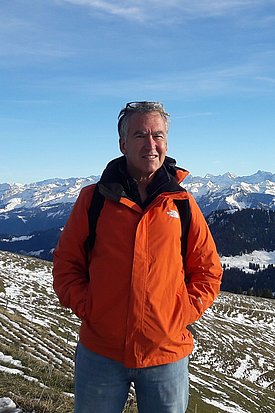Professor John D. Marshall ¶

Department of Forest Ecology and Management
Swedish University of Agricultural Sciences
Fellowship Period: 06.2021-11.2021
Tree physiology can be scaled up to forest ecosystem ecology because both focus on pools and flows of materials, primarily carbon, water, and nitrogen. The power of this approach is that the masses must balance, as in a budget. We use tools such as stable isotopes, chambers, sap flux, and eddy covariance. Tree rings provide a means of looking backward in time, particularly with stable isotopic data. These methods can predict how forests and trees will respond to climate change.
Activities within WSL Fellowship ¶
An Isotopic Bridge between Scots Pine in Sweden and Switzerland
with Paolo Cherubini and Arthur Gessler
We began the following projects during my time in Birmensdorf:
- A review of height effects on the stable isotope composition of tree rings, with Paolo Cherubini. This will address recent literature on age, hydraulic limitations, and hydraulically relevant adjustments in wood anatomy. This affects how we interpret the isotopic record of changing CO2 in the atmosphere.
- Analysis of tylosis formation and water-use efficiency in Costa Rican woods, with Paolo Cherubini, Holger Gaertner, and Matthias Saurer. This dataset shows that tylosis formation precedes changes in wood color, which are typically used to indicate functioning sapwood.
- The coupling and horizontal distribution of water and nitrogen uptake in an irrigated Scots pine forest, with Arthur Gessler, Frank Hagedorn, Kerstin Treydte, and others. This will look at how far root function can be detected from trees, understory stems, fungi, and soils at Pfynwald, the long-term irrigation study in Valais.
- Per-tree estimates of GPP from Loetschenthal, with Patrick Fonti, Ely Martinez, Matthias Saurer, and Kerstin Treydte. This is an attempt to combine the sapflow data with isotopes in ethanol extracts of microcores, where we plan to compare species across different elevations on the transect.
While at WSL, and despite the COVID pandemic, I also visited:
Marian Pavelka and colleagues at Czech Globe in Brno, where they are applying our isotopic tools to estimate GPP
Giovanna Battipaglia in Naples, to discuss the combination of anatomical with isotopic data in tree rings and visit their site on Vesuvio.
Daniele Penna and Roberto Tognetti in Florence, to discuss Daniele’s research catchment and joint manuscripts with Roberto.
The WATSON COST action in Ljubljana, where we discussed water isotope applications in ecosystems.
The University of Freiburg, where we discussed methods of storing water vapour samples.
Gave an an online seminar in Basel to the department of Plant Biology and Biodiversity about our isotopic C budgets in Sweden.
